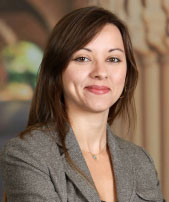
Are professional learning experiences aligned with teachers challenges and needs? An analysis of teachers' perspectives about their PLE in two departments of education in Brazil
Worldwide, departments of education offer professional learning experiences (PLE) for teachers aiming to improve their practices and impact students' learning. Evidence about the effectiveness of those learning opportunities, however, is mixed (Desimone & Garet, 2015; Kennedy, 2016), with some small-scale programs showing positive results (Brown & Campione, 1994; Jacobs & Empson, 2016; Kloser et al., 2016) and some large-scale programs showing an absence of impact on student learning (Loyalka et al., 2019; Popova et al., 2016). In other words, while there is some evidence that PLE can lead to the intended outcome of student learning, the mixed results from these studies raise a question: What happens between the inception of PLE and its effect on student learning that makes it successful?
One way of looking at the trajectory between the program design and the outcome, as McChesney and Aldridge (2019) suggest, is understanding teachers’ perspectives during this process. Several models describing the path between design and impact of a program imply that before reaching the students and improving their learning outcomes, PLE must change teachers’ learning and practices (e.g., Desimone, 2009; Guskey, 2002; Opfer, 2016). Even a well-designed program might fail to produce such changes if it is not aligned with teachers' needs or does not address the concrete challenges teachers face in their classrooms. Even though understanding teachers' needs and challenges seems crucial to offering more fitted learning opportunities, little research has addressed this problem.
In this study, I focus on k-12 teachers’ perspectives about the PLE they received and the alignment between those learning opportunities and the challenges they face in the classroom. More specifically, the study investigates the following research question: How aligned are the teachers PLE with their needs, and how does that relate to their satisfaction with (or perceived value of) PLE)? I use survey data from teachers working in two large Departments of Education in Brazil to respond to the question.

